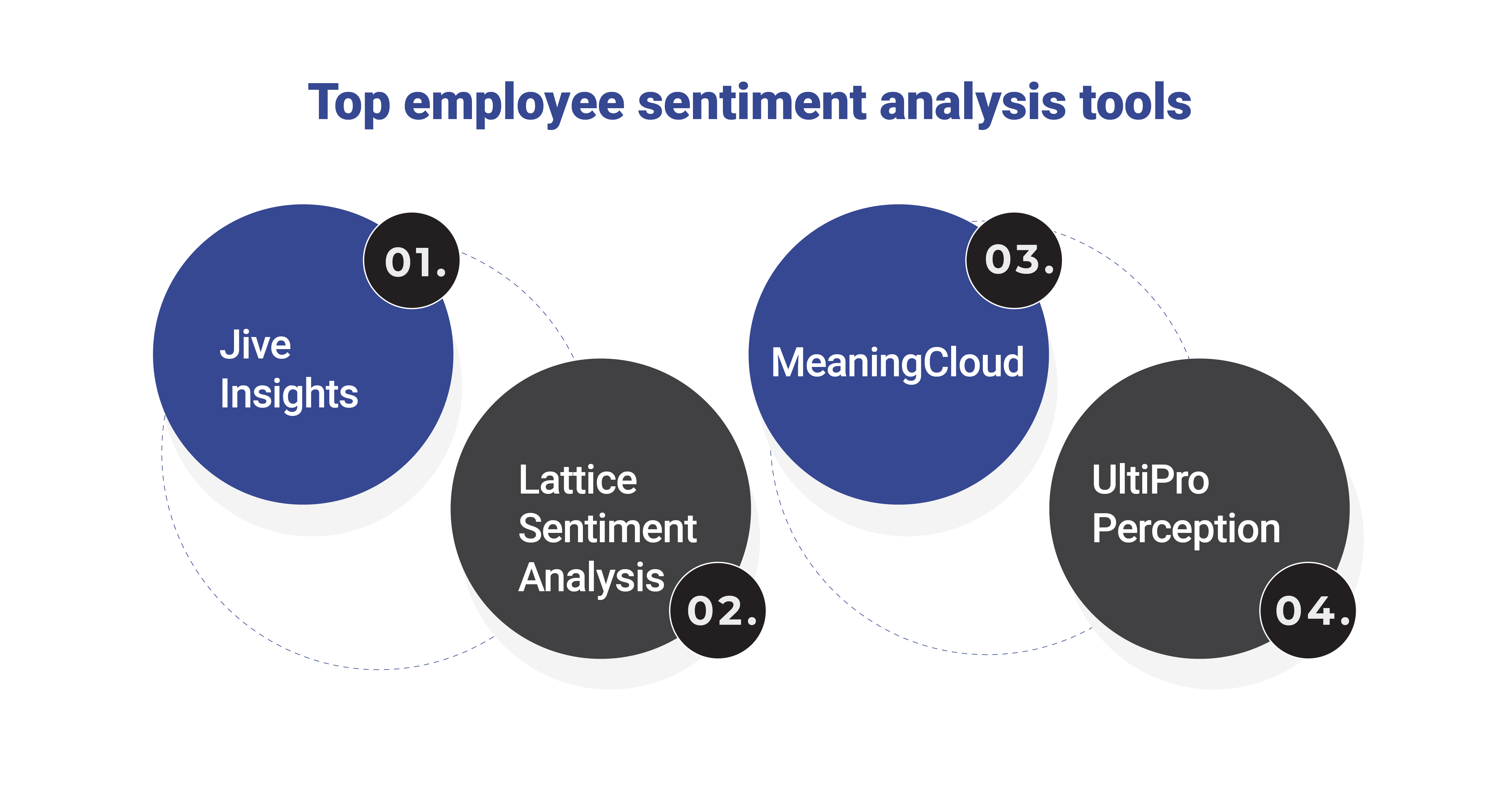
The HR industry has been booming for the past few years. The size of the global human resource technology market was estimated at USD 24.02 billion in 2021, and is projected to grow at a CAGR of 5.8 percent from 2022 to 2028 to reach USD 35.68 billion (Source: Globenewswire). Employee sentiment analysis is one such technology that we are going to discuss today.
Imagine getting a quick snapshot of the mood of everyone in your company at your fingertips. It seems perfect, doesn’t it? Making sense of the wealth of information streaming into your HR software and using it to spot hazards and opportunities might have a positive effect on both your organization and your workforce.
Employee sentiment, which may be evaluated through sentiment analysis, refers to the general "mood" your employees are experiencing within your firm, depending on both internal and external influences.
In the past, HR managers have conducted their people management using quantitative results entered into spreadsheets, often supplied by payroll systems. However, many people have discovered that you can only infer so much information from statistics.
Sentiment analysis is useful in this situation. You can use it to examine and analyze the qualitative HR data obtained through polls, pulses, and other materials distributed across your employees.
Sentiment analysis blended with AI is being used to help businesses in a variety of ways, including learning how employees feel about their workplace, how effective training and skill development initiatives are, and how to spot danger signs, what their concerns are, identify signs of burnout, identify indicators of job dissatisfaction, and stop employees from leaving for competitors.
Annual performance evaluations and surveys don't give businesses enough data to truly grasp how employees feel about them as employee turnover rates rise.
Employee sentiment analysis can help with it. Employee perception of their employer has a direct impact on how that employer is seen, according to Mercer's 2022 Global Talent Trends Study. Over 80 percent of C-level executives believe that it is crucial for businesses to become approachable and transparent. Employee sentiment analysis offers several crucial capabilities, such as:
Each employee remark receives a sentiment score from the software, which uses NLP to assess whether a combination of words and phrases has a good, neutral, or negative attitude.
These results are combined, and managers and business executives are given a visual representation of them through data visualization. Business executives may boost corporate culture and staff engagement by being able to visualize employee mood. They can also use the information to strengthen their performance management procedure to enhance the employee experience.
“Sentiment analysis can help gauge how employees are feeling at any given point in time,” said Sameer Maskey, Ph.D., founder, and CEO of AI talent platform Fusemachines
Companies can build sentiment analysis software to track employee engagement levels throughout the day. For instance, email-based sentiment analysis can pinpoint certain words and phrases and aid in inferring insights from emails written at the departmental or personal level. Then, businesses can utilize this information to solve particular problems or implement structural changes.
Leveraging employee sentiment analysis, HR may ascertain if and to what extent unstructured, qualitative data is favourable, negative, or neutral.
Comments, probation reviews, onboarding and offboarding feedback, policy compliance, performance reviews, and discussions about employee goals, and requests for business feedback are all examples of qualitative data.
By examining how employees interact in the workplace, employee sentiment research also enables HR to more quickly and effectively gain insightful information about how employees feel about the company.
It also aids HR in closely monitoring employee language, tone, and interests in email and other channels of communication to ascertain whether staff members are content with or unhappy with their roles inside the organization.
For instance, Open-ended responses from employee surveys can be subjected to sentiment analysis to quickly determine how the person feels about their job and the firm.
The subjects or themes that are addressed in the surveys can be further identified using more sophisticated techniques, such as aspect-based sentiment analysis, to provide a better understanding of the survey results. The outcomes don't need to be understood by an analyst or scientist because many technologies that use sentiment analysis convey the results in understandable ways.
Since sentiment analysis is still in its infancy, not all of it may be effective at determining employee sentiment with accuracy. However, they can at least reduce the amount of speculation about how employees feel about their jobs.
The following suggestions for 2023 are listed in no particular order:

Jive is an HR SaaS provider with a focus on teamwork and communication at work. Jive Interactive Intranet, its flagship offering, has a comprehensive analytics tool. You may see how various initiatives are progressing, what people are talking about most, who the hidden talent and internal influencers are, and sentiment analysis, thanks to this.
Every open-ended response is assigned a sentiment score by Lattice Sentiment Analysis, enabling managers to spot anomalies, patterns, and issues immediately without reading employee comments. According to the manufacturer, Lattice's NLP engine employs AI and machine learning technologies for quick, precise sentiment labeling. The software also enables businesses to comprehend the relationship between worker satisfaction and productivity, giving management useful information.
The sentiment analysis tool from MeaningCloud is accessible as a free API that may be included in just about any program. You now have a tonne more freedom because MeaningCloud can be integrated with your in-house HR software. However, as this is not a standard method, it would necessitate some technical know-how.
To discern if sentiment is favourable, neutral, or negative, MeaningCloud does multilingual sentiment analysis. In order to arrive at a "global sentiment," it determines individual phrases and analyses their associations. The API is free to use, as was already indicated, and developers can access a vast library of documentation.
The AI-based, mobile-friendly employee survey product from Ultimate Software is called UltiPro Perception. According to the manufacturer, the system gathers data and open-ended replies from employee engagement surveys aid businesses in understanding employee mood and can identify emotions. According to the vendor, the software provides businesses with insights for enhancing employee performance and retention. It is driven by Xander, Ultimate's AI engine. In order to understand the motivations behind employee responses, it analyses survey findings for enterprises.
Companies who are considering sentiment analysis should take the following actions:
Create open-ended questions differently to ensure that you receive sincere input from employees. Structured questions are less effective than open-ended ones at eliciting sincere responses from survey respondents.
Make the sentiment analysis result in a reference rather than a deciding element. Use the findings, but don't let them serve as the final word.
Sentiment analysis should be used on a larger sample of employees and surveys should be conducted more regularly because huge data sets enable more accurate and objective analysis. While there is no set frequency for conducting surveys, businesses may wish to steer clear of annual or one-off polls in favour of a regular cadence.

CredBadge™ is a proprietary, secure, digital badging platform that provides for seamless authentication and verification of credentials across digital media worldwide.
CredBadge™ powered credentials ensure that professionals can showcase and verify their qualifications and credentials across all digital platforms, and at any time, across the planet.

Please enter the License Number/Unique Credential Code of the certificant. Results will be displayed if the person holds an active credential from TMI.